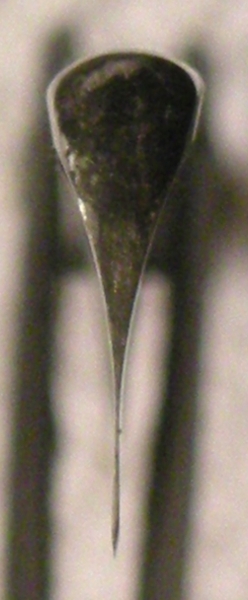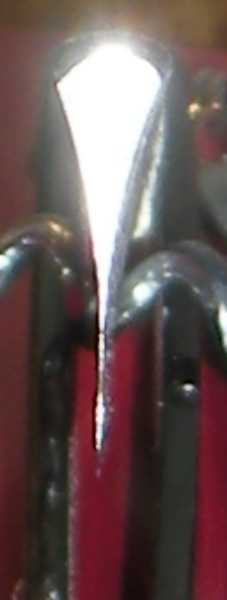Results 21 to 28 of 28
-
07-29-2009, 02:53 PM #21

hi_bud_gl , I do not think, that it is resembling picture. Your razor does not correspond to this picture too. It is picture of one of standard kinds of grinding: bellied hollow. Razors in this theme have not standard grind. IMHO.
Alex Ts.
-
07-29-2009, 02:56 PM #22

So sorry,
 Me so stupid! I was under the impression that you were using the word 'belly' to refer to the curving 'smile' of the blade.
Me so stupid! I was under the impression that you were using the word 'belly' to refer to the curving 'smile' of the blade.
Although it doesn't have the same form, the ground-in thickened 'belly' of the blade serves the same purpose as a T-form structural reinforcement. It stiffens the blade without significantly adding to its weight. Actually, both blades have the 'belly', except that on the one it is very pronounced and the on the other it is a mere ground-in thickening.
-
07-29-2009, 03:36 PM #23

This is the best photo I have on hand which shows what I have always thought the belly is:

Here's another poor photo

Last edited by hoglahoo; 07-29-2009 at 03:41 PM.
Find me on SRP's official chat in ##srp on Freenode. Link is at top of SRP's homepage
-
07-29-2009, 04:05 PM #24

Sure there are razors that don't have a belly. They're less common but correct me if I'm wrong, they're known as single concave grinds. I have some of them. When the face of a blade that has a belly is viewed and tilted in the light, the band of light starts from the spine moving down toward the edge, then another band of light originating at the edge and moving up toward the spine meets the first band of light at the belly. The bands of light converge at the belly.
In a single concave grind, there is no second band of light originating from the edge and moving upward. You can follow that first band of light all the way down to the edge.
The belly is the result of the razor maker using a smaller diameter grinding wheel at the edge area than the larger diameter wheel used to grind out the main hollow of the blade.
Butch knows better than most since he grinds blades, but it makes perfect sense to me that if one were to use a single grinding wheel AND try to get a blade as thin as you'd find on an extra hollow razor, your edge and bevel area would be too thin.
Chris L"Blues fallin' down like hail." Robert Johnson
"Aw, Pretty Boy, can't you show me nuthin but surrender?" Patti Smith
-
07-29-2009, 09:31 PM #25

Manah i am having problems to understand what are you saying?
As i said early message your diamond edge blade doesn't have belly(JOSEPH RODGERS&SONS CUTLERS THEIR MAJESTIES N 96 NORFOLKS STREET SHEFFIELD). Happens to be right now i have exact blade which you have posted picture second picture on your early post. That blade is near wedge blade without any belly. The razor i have posted does have belly. i don't have a great camera to take picture of the blade which i can show belly in front(face) pf the blade. i did take 2 pictures 1 st is your diamond edge blade second is picture of simmons hardware co special #8.i hope this clear things up.
IF ANYONE knows how i can take better picture of the face to show belly i would appreciate
-
07-29-2009, 09:54 PM #26

Do you see now?
And it is Thomas Turner.
I spoke about picture from classicshaving .com, that you have posted.Last edited by manah; 07-29-2009 at 10:03 PM.
Alex Ts.
-
07-29-2009, 10:47 PM #27

This blade does have belly and interesting it is a wedge blade . I post that picture from classified to clear things up for people to understand what i was talking about.
-
07-30-2009, 12:18 AM #28

I agree. Same reason we build with I beams. Stress (and thereby displacement) varies by an exponent of 2 or 3 with distance, while moment of inertia by an exponent of one more. So in theory, having two stiff parts as far apart as possible is the most efficient way to get stiffness... hence we build with I beams.


 LinkBack URL
LinkBack URL About LinkBacks
About LinkBacks







 Reply With Quote
Reply With Quote

